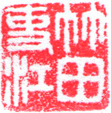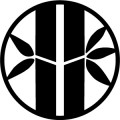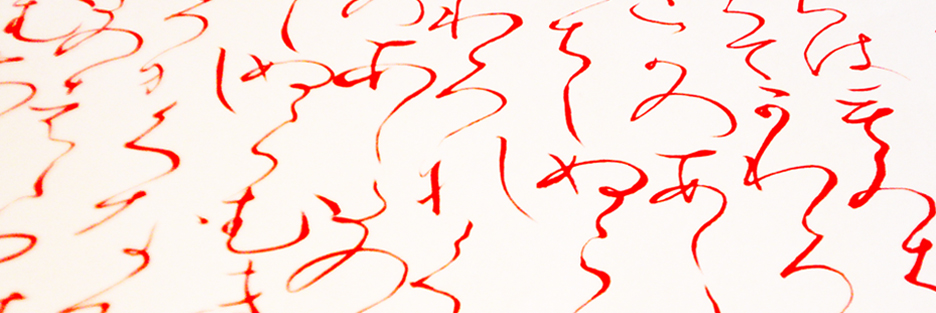SHOTAI – 書体 – Shodo Styles
There are various calligraphy styles, types and forms, that have been developed in the last 3000 years together with our mankind history. The style could sometimes reflect characteristics of those times, trends, favour of the ruler and often a curiosity of calligraphers at that time. SHO means : to write, calligraphy and TAI is : body, style. While expanding various forms and styles, skillful calligraphers continuously challenged and mastered the uncountable layers of techniques and unfolded a depth of calligraphy itself.
Even if there is the same style of calligraphy, talented calligraphers magically unfold a different expression with Sumi ink on paper. Here are the major calligraphy styles and some examples.In Shodo there are three basic styles SANSHOTAI (三書体):
- KAISHO 楷書 (block / regular script)
- GYOSHO 行書 (semi-cursive script)
- SOSHO 草書 (cursive script)
One normally starts the SHODO practice with the Kaisho style and then step up to
the GYOSHO Style. Those two are commonly practised calligraphy script. When one completes the two major styles, one can start with Sosho style.
These are often followed by KANA (仮名 Japanese Hiragana in cursive), Clerical script (隷書, Reisho), Seal script (篆書, Tensho, further divided into great seal and small seal scripts). If school children in Japan have a choice of SHODO in an art class, they only practise KAISHO Style.
o TENSHO ( Seal script)
o REISHO ( Clerical script )
o KAISHO ( Block/ Regular script )
o GYOSHO ( Semi-Cursive script )
o SOSHO ( Cursive script)
o KANA ( Jap. Hiragana in cursive)
o ZEN ( or BOKUSEKI concentrated itself on the Expression the moment )

o ZENEI ( Modern )
 By Hidai Tenrai
By Hidai Tenrai
o SHAKYOU ( Buddhistic Sutra calligraphy )

⏬
KOUKOTUBUN 甲骨文 : Oracle bone inscriptions
(c.1500-1100B.C.)
Let me introduce you the core of all scripts: oracle-bone and tortoise shell script.
These ‘inscriptions on oracle bone’ are believed at the moment to be the oldest example of writing.
The earliest inscriptions are dated back to 15th – 16th century B.C. Oracle bones script was not always carved, sometimes characters were written by means of a brush, bamboo and wood were the prevailing writing materials.(C.1500-1100 B.C)

SHOTEIBUN 鐘鼎文 : Bronze-vessel and bell inscriptions
(C.1100-221 B.C) 金文 KINBUN Texts on metal

TENSHO 篆書Seal script
*DAITEN 大篆Greater seal script:
(403-221 B.C)
*SHOTEN 小篆Lesser seal script:
(210-206B.C.)
The cursive and bold style of TENSHO became suitable for titles of published works and also a foundational script for seal design. This tradition of using TENSHO for titles is still popular.It still has a pictographic element and at the same time it presents more structural composition than 金文 KINBUN /Texts on metal.
REISHO Clerical script
*KOREI (221-206 B.C)
*KANREI (206 B.C-220A.D)
The Clerical Script or Scribe’s Script (reisho) is a very bold and commanding style of Chinese calligraphy, each of the strokes are greatly exaggerated at the beginning and end. It was most commonly used during the Han Dynasty (206 BC- 220 AD) and the term reisho had many significant meanings but is now only known as one of the five styles of Chinese and Japanese calligraphy. Because of its bold style, the reisho technique is now reserved for large text applications such as plaques, signboards, titles of works, etc. This was its main purpose in Japan as well until the Edo Period (1603-1868) when it was regarded as a calligraphic art form.
GYOSHO 行書 : semi-cursive
(206 B.C-220 A.D)
The Semi-cursive Script (gyosho) means exactly what it says; this script style is a slightly more cursive version of kaisho script. This script was practiced at the same time as the reisho script. There are three different levels of “cursiveness” called seigyo, gyo, and gyoso. The style of gyosho utilizes a softer and more rounded technique, staying away from sharp corners and angles. In Japan many works were made using the gyosho technique during the early Heian Period. Later in the Heian Period, once Japan began to separate itself from China a Japanese version called wayo began to emerge. The Japanese version of gyosho became widely popular and became the basis of many schools of calligraphy. This was a result of gyosho meshing very well with both kanji and hiragana and writing with this technique was both natural and fluid.
KAISHO 楷書: Block script
(4th -5th A.C)
The Regular Script or Block Script (kaisho) is fairly similar in function to that of Roman block capitals. While Japanese kaisho varies slightly from Chinese kaisho, it is primarily based on Chinese kaisho script in both form and function. The Japanese kaisho style was heavily influenced by the Sui Dynasty (581-618) and the following Tang Dynasty (618-907). Early examples of this style in Japan are mostly various statue and temple inscriptions. This was during the early Heian Period (794-1185) and as time progressed there was a movement in Japan to become more culturally independent and a version of kaisho developed that became uniquely Japanese and included a little bit of the gyosho style. As its influence spread, the primary use of the kaisho technique was to copy the Lotus Sutra. There was a second wave of influence during the Kamakura (1192-1333) and Muromachi (1338-1573) periods, but this was mostly by Zen monks who used a technique based on Zen insight and is different from the classic kaisho technique.
ZATTAISHO 雑体書: Ornamental style
(5th-6th A.D)
Mainly ornamental variants of seal Tensho and scribe’s Reisho.
SOSHO : cursive script (206 B.C -8th A.D.) /Literally, „ grass writing“
The Cursive Script (sosho) has its origins in the Han Dynasty. It was used by scribes as a cursive version of reisho for taking notes. Early examples of sosho include inscriptions on bamboo and other wooden strips. This technique can be easily recognized by many strokes ending with a sweep to the upper right in a breaking-wave type form. As the Han Dynasty came to an end, another version of sosho was developed, but this version was written slowly as opposed to the faster sosho that was popular until then. The exact date when sosho was introduced is unclear. Several texts from Japan shared many sosho-like techniques with Chinese texts during this time but it was not until Kukai, a famous Japanese buddhist monk and scholar traveled to China during the early Heian Period and brought back copies of texts that he made written in the sosho style.
KANA :
(794 -1185)
Kana demands of an artist a vast knowledge of cursive script (Sosho)
Further, kana requires a great control of the brush as it is held by the fingertips at the end of the shaft by means of the hanging arm technique (懸肘, kenwan), with the elbow suspended in the air. Since calligraphy ought to be written with the very tip of the brush, a microscopic movement of the wrist can apply drastic changes in the appearance of the line. Studies of kana and kanji are usually separate subjects in calligraphy. Mastery of both is difficult to impossible, and definitely takes up an entire lifetime. The most famous work and at the same time the first novel in kana is The Tale of Genji Genji attributed to the Japanese noblewoman, Murasaki Shikibu (c. 973 – c. 1014 or 1025).
BOKUSEKI : ZEN calligraphy
Bokuseki (“traces of ink”) is a calligraphy or abstract “ink painting” created by Zen Buddhist monks entranced in a meditative state. The history of Zen calligraphy goes back to 618 – 1279 A.D. The concept of Zen calligraphy reaches deep beyond art, evoking intimate spiritual experiences. The calligrapher enters a state of mushin (無心, lit. “void heart”) which can be defined as “being free from obstructive thoughts”. Written by a mind swept of all distortions, the calligraphy becomes the void itself (空; kuu, i.e. “the void” is the highest element in the Japanese theory of the five elements, a reference to absolute detachment).→Develops into avant-garde calligraphy, also known as zen-ei shodou
SHASHOU 写経: SUTRA Calligraphy
The practice of tracing the Sutras, it called SHAKYO in Japanese.
This is virtuous shodo practice. Sutra tracing is originally a Buddhist practice and a special way of doing Japanese calligraphy. It is the art of tracing a Buddhist sutra with awareness and it brings together the ideals of genuine Shodo. Shakyo harmonizes body and mind and through their integration creativity flows freely.The Buddhist practice of Shakyo is supposed to be a means of spreading the Buddha Way among people. It is also for praying for the fulfillment of one’s greatest wish. But today, besides these overtly religious purposes, we can do Shakyo in order to reflect on ourselves, or to attain mental well‐being by mindfully tracing the sacred scriptures. It does not matter if one has faith in Buddhism or not, or if one’s writing is good or not. Shakyou is like meditation.

EDOMOJI 江戸文字 :
Since Edo priod (1603-)
Edomoji has seven types of lettering forms. They were invented and developed mostly for advertising purposes such as posters, flyers, programs, name plates. Mainly used in Raguko, Kabuki theatre in the Edo period.
CHOCHINMOJI 提灯文字
It is found on paper lanterns outside restaurants and stands. The paper lanterns are called Chochin.
The letters are calligraphy-ied on hanging paper lanterns. This style for Chochin is used for teahouse, bars, stands, shop signs.
Higemoji (髭文字)
The characters have little “whiskers” is called Hige in Japanese on them. This style is used for KAKIGORI shop signs as well as being a common style for Sake shop.
Kagomoji 籠文字
The name literally means “cage letters”.
The characters are thick and square in shape.
It is usually used in inverted form or sometimes as an outline.

KAKUJI 角字
This is a very heavy, rectangular style used for making seals.
Very abstract and graphic impression.
KANTEIRYU 勘亭流
It is also sometimes called simply KANTEI or SHIBAIMOJi.
It is a style strongly associated with arts like KABUKI and RAKUGO.
Invented by Okazakiya Kanroku (岡崎屋 勘六).
The name of this style derives from Okazaki’s nickname, KANTEI.
SUMOUMOJI, 相撲文字
SUMOJI or CHIKARAMOJI style of lettering is used for SUMO wrestling posters, advertisements and SUMO programmes.
YOSEMOJI 寄席文字
The name YOSEMOJI literally means “letters for YOSE” Japanese theater also means to draw in customers. A combination of kanteiryū and chōchinmoji, it was used for posters and flyers, as well as in RAKUGO performancs, NAFUDA name plate and NOBORI flag.
Unlike other calligraphic styles, YOSEMOJI allows and even encourages multiple brushstrokes in order to fill in the characters as much as possible. That is why YOSEMOJI was often considered to bring good luck und prosperity.
HAPPY PRACTICE!!
RIE




































super! Plein de choses intéressantes. Merci
LikeLike
Excellent! thank you very much!
LikeLiked by 1 person
SO INTERESTING, THANK YOU RIE
LikeLiked by 1 person
Looking forward to getting started! Gratitude, so grateful to have found you Rie..
Sending you kindness Maura
LikeLiked by 1 person
Very interesting that similar to occidental writing, in Japan also exist different types on typing, but with the name: Yosemoji, Sumoumoji, Kanteiryu, or kagomoji.
LikeLike
Indeed, the style has developed with town culture during the edo period.
Happy Practice! Rie
LikeLike